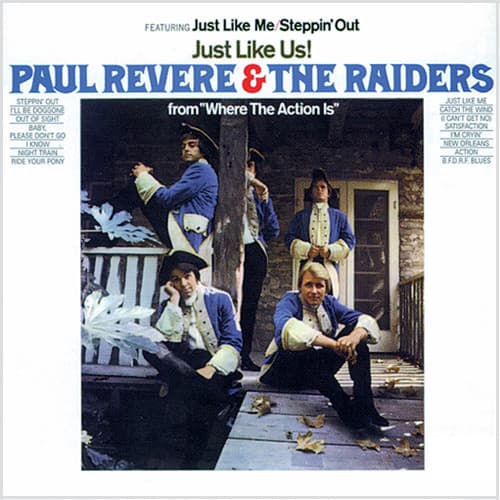
The raw, blistering sound of “Just Like Me” captures the angst of a young man watching his love interest move on.
In the mid-1960s, a musical storm was brewing, and it wasn’t coming just from across the Atlantic. While The Beatles and The Rolling Stones were redefining pop music, America had its own homegrown revolutionaries, one of the most visible being Paul Revere & The Raiders. Dressed in their Colonial-era costumes, they were a fixture on the television show Where the Action Is, with their clean-cut image and high-energy performances making them the darlings of the teenage set. But underneath the powdered wigs and tricorn hats was a band with a genuine garage-rock heart, one that was ready to unleash a sound far more ferocious than their television persona suggested. Their single “Just Like Me,” released in late 1965, was a watershed moment, a track that bridged the gap between their pop-friendly image and their raw, rebellious musical instincts. It was a song that, as producer Terry Melcher noted, had a “Kinks-esque” quality, a gritty, hard-driving riff that felt both familiar and utterly fresh. It was a sound that would define them and set the stage for their biggest hits to come.
The song’s story is a classic one of serendipity. While the band was busy crafting its pop image for a national audience, an unsolicited demo tape arrived at their publishing office from a fan, a young songwriter named Richard Dey. He, along with his writing partner Rich Brown, had penned a tune that was a perfect, stripped-down lament of a broken heart. The lyrics were simple, direct, and universally relatable, a bitter reflection on seeing a former flame with a new guy who, to the narrator’s chagrin, is “just like me.” This simple, yet profound, message struck a chord. The song’s genius lies in its unvarnished honesty. It’s a shout of emotional turmoil, delivered with an almost sneering intensity by lead singer Mark Lindsay. The track’s power is amplified by guitarist Drake Levin’s distinctive, double-tracked guitar solo, a gritty, distorted sonic punch that would become one of the first of its kind in rock history. This was a sound that moved beyond the surf-rock and teen-pop of the early ’60s and pointed directly to the hard rock that was on the horizon.
When “Just Like Me” was released as a single, it was an undeniable success. While the band had found some regional success and a minor national hit with “Steppin’ Out,” this was the song that truly put them on the map. It peaked at an impressive #11 on the U.S. Billboard Hot 100 chart in early 1966, an achievement that cemented their place as a major force in American rock. The song became the title track for their 1966 album, Just Like Us!, a record that would go on to be their first to be certified gold. This success was a testament to the band’s ability to blend a raw, unpolished sound with a polished, accessible pop sensibility. They were garage rockers in Revolutionary War attire, a captivating contradiction that resonated deeply with a generation of young people navigating the tumultuous changes of the era. The song’s influence extended far beyond its chart run, laying the groundwork for future classics like “Kicks” and “Hungry,” and inspiring countless garage bands who sought to capture that same blend of teenage angst and musical fire. “Just Like Me” is more than just a song; it’s a nostalgic snapshot of a time when a simple three-chord riff could speak volumes about heartbreak and defiance.